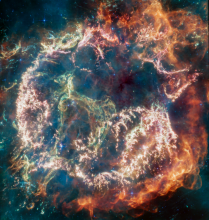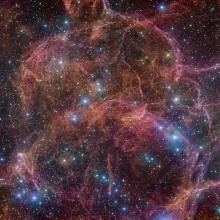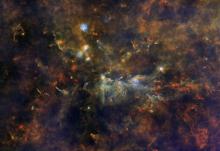Listen to today's episode of StarDate on the web the same day it airs in high-quality streaming audio without any extra ads or announcements. Choose a $8 one-month pass, or listen every day for a year for just $30.
You are here
Witch Head Nebula
Rigel is not just one of the brightest stars visible in the night sky. The supergiant is also one of the brightest stars in the entire galaxy — more than a hundred thousand times brighter than the Sun.
One indication of Rigel’s brilliance is a cloud of gas and dust about 40 light-years from it. Without Rigel’s light, the cloud would be completely dark. But the cloud reflects light from Rigel, making it visible. The cloud’s outline looks like the profile of a laughing witch. So it’s known as the Witch Head Nebula.
The nebula is about 900 light-years away, and spans about 70 light-years. It consists of the remains of a dead star. But it also appears to be giving birth to new stars.
Considering the nebula’s location, that’s not surprising. It’s on the edge of a region that’s given birth to many young, hot, bright stars — including Rigel. Winds and radiation from these stars are eroding the nebula, sculpting its “witch head” shape. But they’re also squeezing the nebula. That causes pockets of gas and dust to collapse and give birth to new stars. As those stars take shape, their own radiation and winds will further erode their birthplace — and the Witch Head Nebula will disappear.
Rigel is in the southeast as night falls, to the right of Orion’s Belt. The Witch Head Nebula is to the upper right of Rigel. It’s barely visible even through a telescope. It takes long-exposure images to show its outline — illuminated by a supergiant star.
Script by Damond Benningfield






